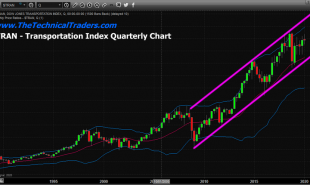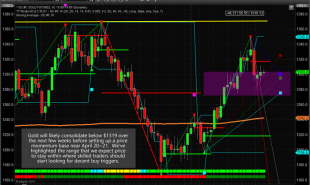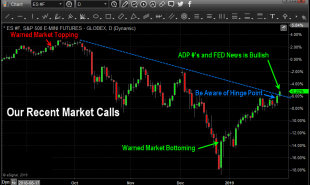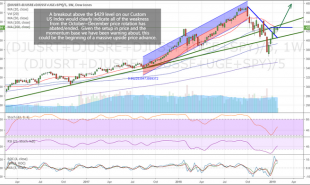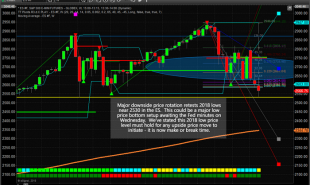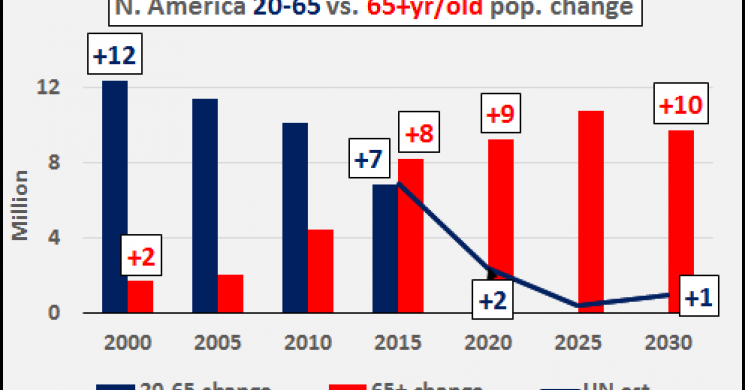
We’ve been big believers in the demographics of the US as the primary driver of everything for the last 50 years. The baby boom after WW2 presented itself like a pig being digested by a python. It disoriented every aspect of the timeline it moved through.
From the post war invention of suburbs, American bourgeoisie 401ks, health clubs, conspicuous consumption and now retirement; the largest numerical generation has left its mark most indeed.
Their sheer numbers are why the grass roots progressive movements of the 60’s woke Americans up and created the social civil rights movement.
But now, in no small part because of their contributions to medicine, the boomer generation will live longer on average than any generation before. And this is a problem. Don’t blame the Fed. The Fed has been doing what it always does, protect the wealthy.
Our caustic contributor Bon Scott, a child of Boomers, has no problem being tongue in cheek rude about it :
It’s the fed’s job to keep the riff-raff out. They’ve been doing it since inception. It’s not their fault that people are living too long to keep the Ponzi scheme going! Blame the boomers who didn’t prosper and are sucking up all our resources while we hold he bag of paying for it. There’s always Soylent Green, right?
But who are we to condemn our own parents for living longer than their parents?
What follows is a dissection of the recovery not by wealth but by age. And it reveals that the baby boomer engine that has driven this country’s economy is no longer able to keep the pace. Worse, who will take up their slack?
Soren K.
Economic Recovery - But For Who?
Via Chris Hamilton and Econimica blog,
How to judge the effectiveness of the economic recovery since 2008 is a challenge?
Many laud the Federal Reserve for it's actions to stave off a possible depression. The Federal Reserve's policies have certainly helped to promote new record highs in financial assets across the spectrum. These policies have resulted in a great rise in household net worth yet has created the fewest net new full time jobs and real income increases since WWII. The chart below shows the household net worth (the combined valuation of all privately held stock, real estate, bonds, etc.) as a percentage of disposable income (what is left after paying taxes) and calls out the decelerating full time job creation.
But as Ray Dalio noted yesterday HERE, the recovery is only a recovery for the wealthy. As the chart below from the Fed's own Survey of Consumer Finances shows, all the record growth in household net worth has gone to the top 20% of income earners since 2007 while the remainder have seen declining net worth.
A means to detail the impact of this lopsided recovery is the record low US fertility rate. During each of the previous run-ups in HHNW, there was a parallel rise in the fertility rate as young adults felt more confident and capable of forming or growing a family. However, since 2007, the collapsing US fertility rate vs. surging HHNW puts the truth of who is recovering in stark contrast.
And below, the US fertility rate vs. all publicly traded US equities represented by the Wilshire 5000. Clearly, the recovery was not a recovery for those of childbearing age but in fact an ongoing depression.
The Federal Reserve is protecting, enabling, and rewarding a shrinking number simply for being asset holders (not for doing anything with those assets) while punishing the growing majority for having few or no assets... and ensuring the vast majority never will be asset owners as asset prices surge versus stagnant wages.
This is all because a flawed economic model premised on perpetual population growth (turning into consumer growth) has now gone off the tracks as growth of the consumer class is collapsing.
The chart below shows annual yoy US 15+yr/old population growth broken down by age groups. Dark green is growth in 15-24yr/olds, aqua blue 25-54yr/olds, yellow 55-64yr/olds, and red is the growth in 65+yr/olds. The deceleration of growth among the 15-54yr/old segment from the late 1980's until growth ceased in 2007 should be pretty obvious. However, both the quantity and quality of population growth, particularly among the 55-64yr/old cadre (in yellow) is thinning out...this is leaving all population growth coming among the 65+ and 75+yr/old segments. Periodic spikes in chart are "one time" Census adjustments, not true population growth spikes.
The portion of the population growing is so important because average income and spending peak as the head of the household hits 45-54yrs/old and begins to really decelerate once the head of household hits 65yrs/old. By the time the head reaches 75yr/olds, their average income and spending are halved and their willingness to use credit to amplify their consumption collapses (chart below).
Below, a close-up of the US 15+yr/old annual yoy population change since 2001. Take a close look at the dynamics that led up to and culminated in the 2008 "great financial crisis" (first dashed circle). Compare that to the dynamics since '08 really intensifying now in 2017. I'm pretty sure the farce that is the present moon shot in asset prices (with central bank thumbs, elbows, and who knows what else on the scale) has aserything to do with this.
Lastly, the collapse of the 20-65yr/old population growth across N. America (US/Canada) is only accelerating and most if not all population growth will be among the 65+yr/old population (data from US Census and UN).
While presidents and political parties have swept in and out of "power", the Fed hasn't changed a bit for decades and is protecting the wealthiest 20% of families (though really it's more like the top 1% to 2% truly raking in the benefits) and punishing the other 80% holding minimal or no assets.
And America's aging population will not allow America to grow her way out of this hole.
Only an outright, "revolutionary" change from the current paradigms and removal of "powers that be" will save the bottom 80% from watching the American dream race ever further away. But of course, better make sure any "new boss" isn't the same or even worse than the "old boss".
Read more by Soren K.Group










